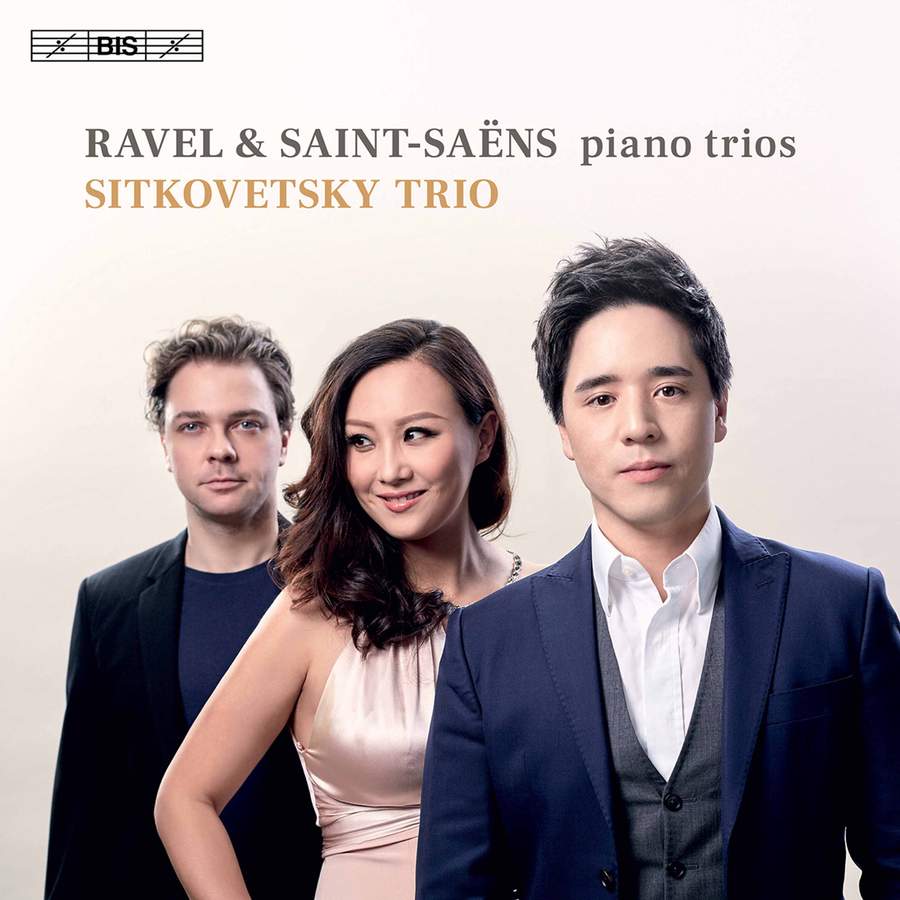RAVEL; SAINT-SAËNS Piano Trios (Sitkovetsky Trio)
View record and artist detailsRecord and Artist Details
Genre:
Chamber
Label: BIS
Magazine Review Date: 09/2021
Media Format: Super Audio CD
Media Runtime: 61
Mastering:
DDD
Catalogue Number: BIS2219

Tracks:
| Composition | Artist Credit |
|---|---|
| Piano Trio |
Maurice Ravel, Composer
Sitkovetsky Piano Trio |
| Piano Trio No. 2 |
Camille Saint-Saëns, Composer
Sitkovetsky Piano Trio |
Author: Tim Ashley
Much admired in these pages for their interpretations of Beethoven and Mendelssohn, the Sitkovetskys make their first foray into French music with an engaging disc that places Ravel’s only Trio alongside Saint-Saëns’s Second, an unusual coupling until one remembers just how much Ravel admired the older composer’s trios for their formal rigour and their careful negotiation of the sometimes difficult balance between the three instruments.
The Sitkovetskys’ Saint-Saëns inhabits territory somewhere between the refined subtlety of Bertrand Chamayou, Renaud Capuçon and Edgar Moreau (Erato, 2/21) and the darker, altogether moodier approach of the Gould Piano Trio (Champs Hill, 7/18). Pianist Wu Qian presses urgently forwards with the opening figurations, and there’s tension rather than seamless homogeneity in the way violinist Alexander Sitkovetsky and cellist Isang Enders shuttle the opening theme between them. The first movement rapidly turns high Romantic, though the swaying 5/8 Allegretto that follows has great and immediate charm, where both Chamayou et al and the Goulds suggest emotional hesitancy at the start leading to greater surety later on. The Andante sounds very Schumannesque here, while the waltz ebbs and flows in the most delightful way. The fugal finale is brilliant, clear and quite stark, closer to the Gould’s austere way with it than the altogether wittier, tongue-in-cheek deftness of Chamayou and his partners.
The Ravel, meanwhile, is extremely fine. Tensions simmer below the surface of the sinuous opening Modéré with its hypnotic rhythm derived from Basque folk music (eight quavers to a bar, grouped 3-2-3). The ‘Pantoum’ scherzo, done with wonderful precision and bite, swerves between brittle, pointillistic elegance and almost feverish sensuality, while the Passacaille opens reflectively, gaining in weight and density as it progresses to its sombre climax. The finale is agitated and intense, its cello trills, eerie violin harmonics and piano fanfares all serving as reminders that it was written at speed at the start of the First World War after Ravel had broken off composition a few months previously. The playing is at once virtuoso and even-handed, textures and counterpoint beautifully clear. Some might prefer the fractionally greater delicacy and transparency of Renaud and Gautier Capuçon with Frank Braley (Virgin, 5/02) or the more reined-in approach of the Trio Mondrian (Challenge Classics, 4/12) in this work, but this is a really beautiful performance nevertheless.
Discover the world's largest classical music catalogue with Presto Music.

Gramophone Digital Club
- Digital Edition
- Digital Archive
- Reviews Database
- Full website access
From £8.75 / month
Subscribe
Gramophone Full Club
- Print Edition
- Digital Edition
- Digital Archive
- Reviews Database
- Full website access
From £11.00 / month
Subscribe
If you are a library, university or other organisation that would be interested in an institutional subscription to Gramophone please click here for further information.




